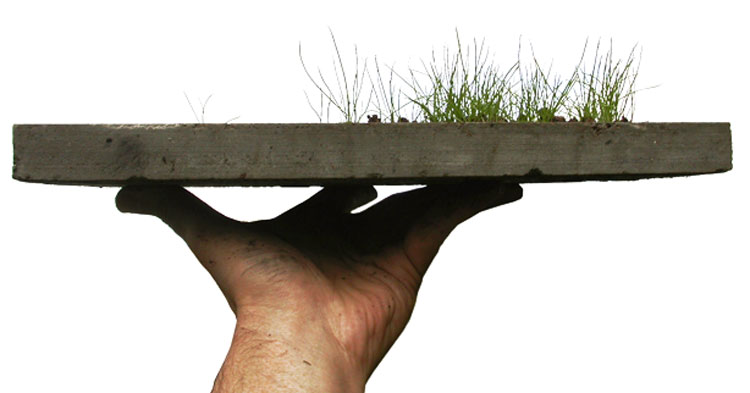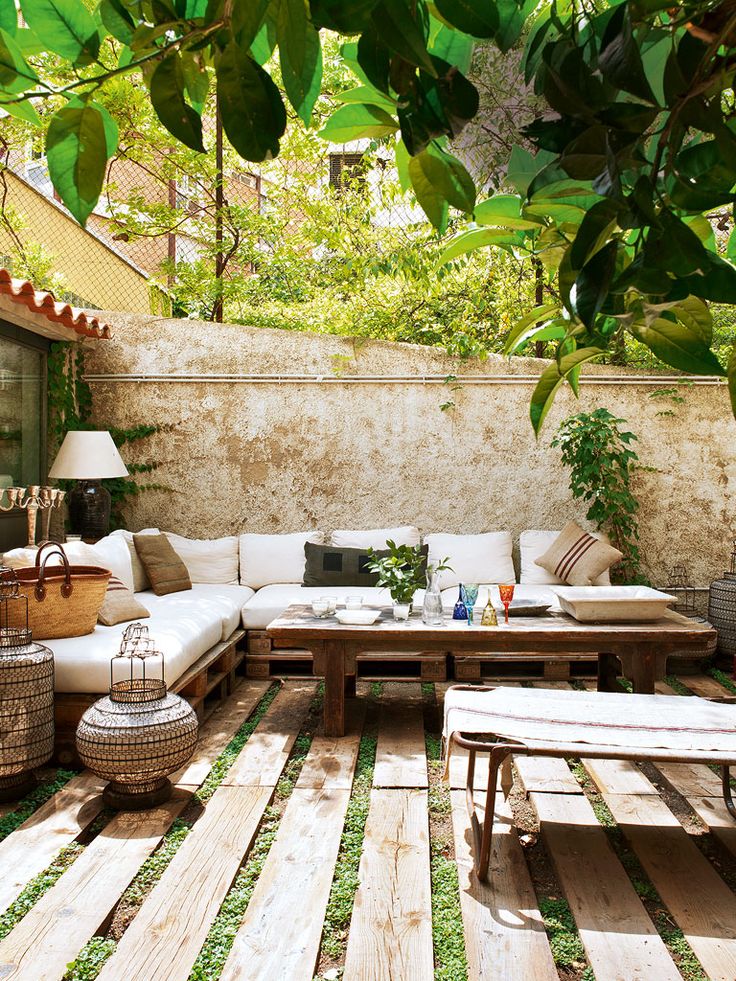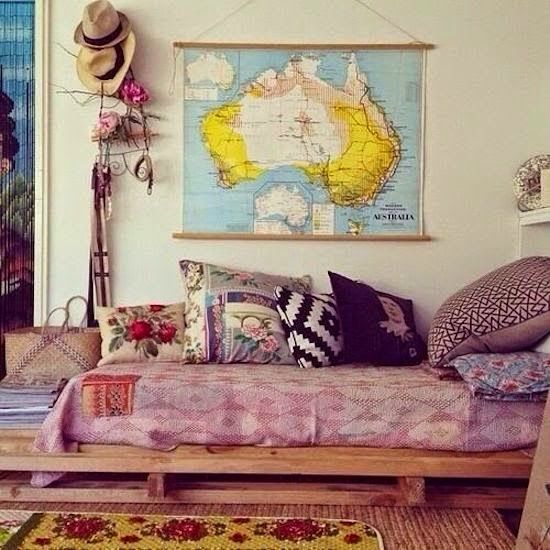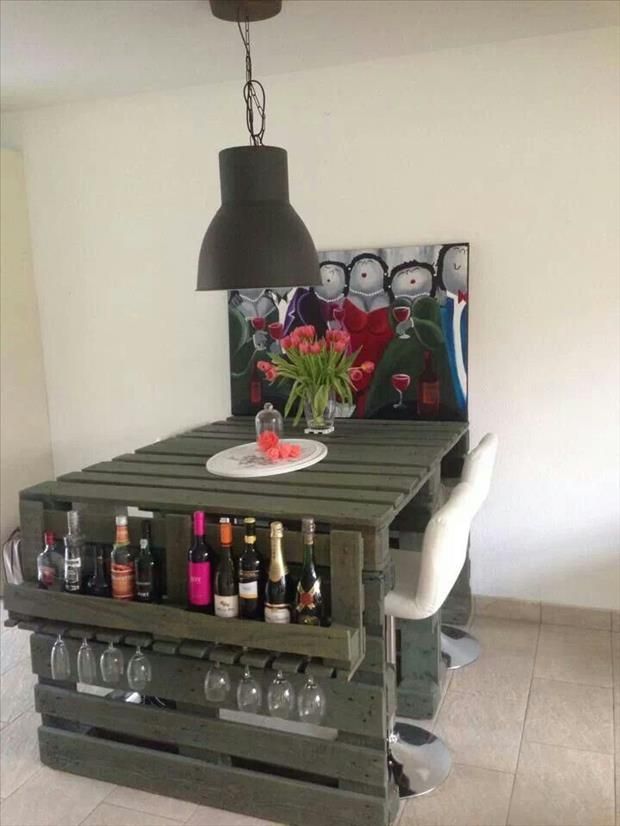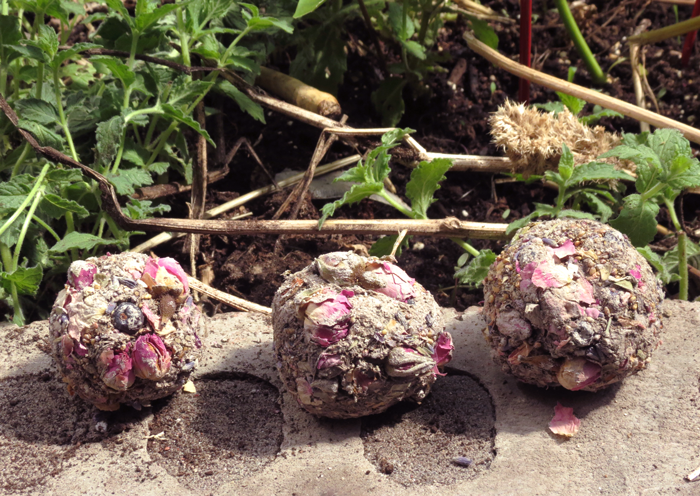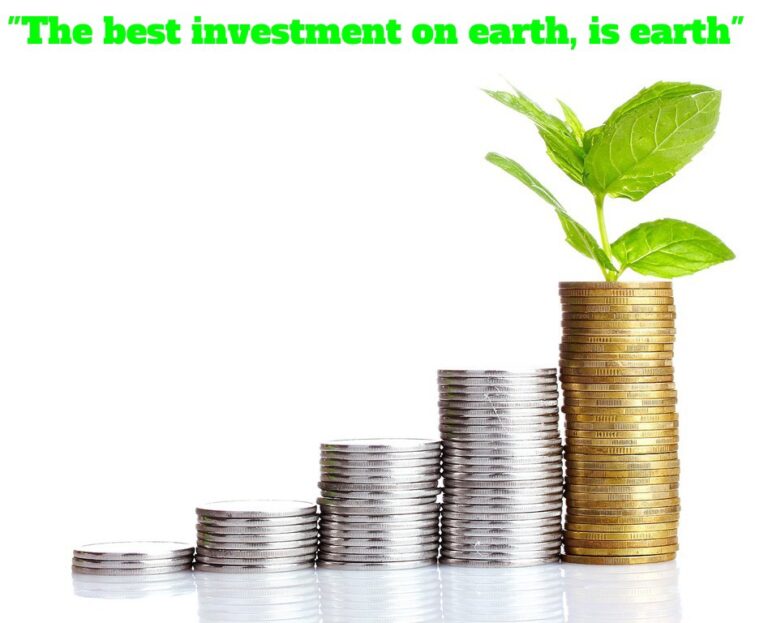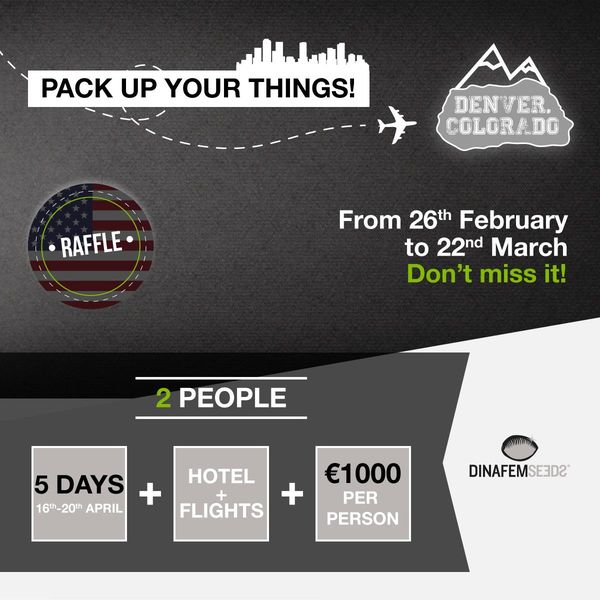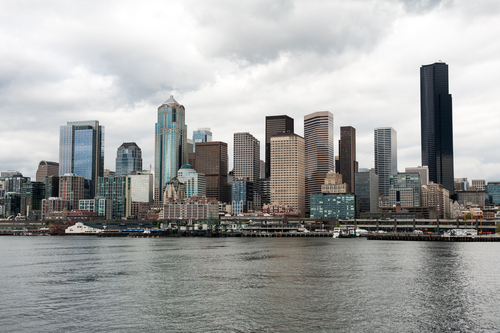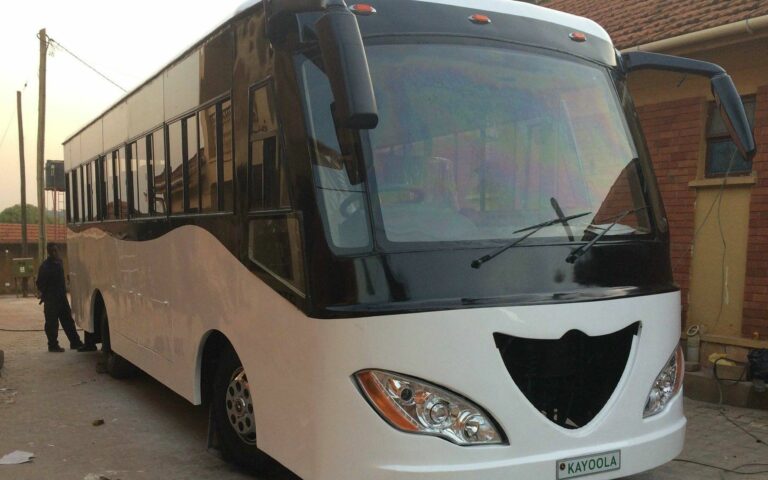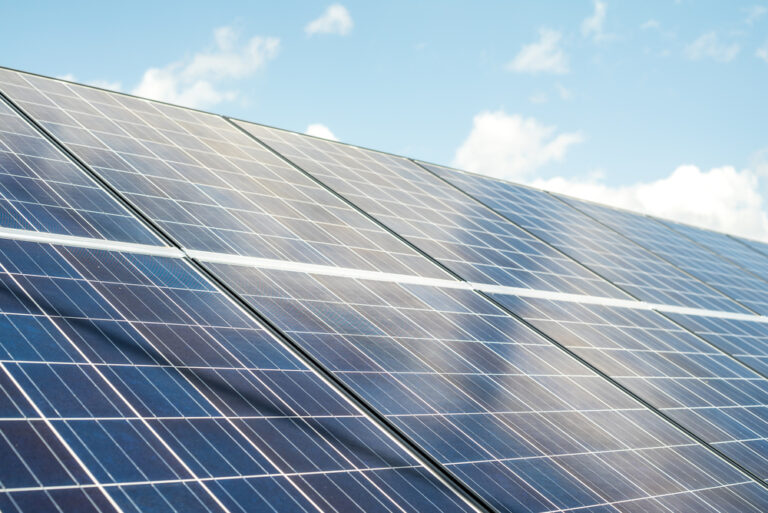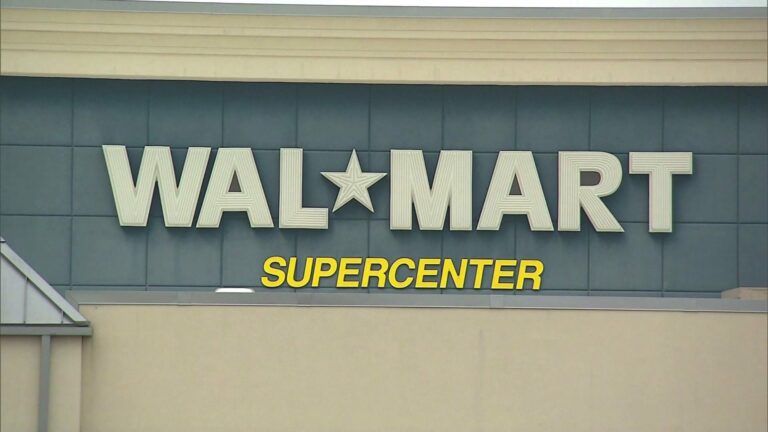Newly-Developed Concrete Absorbs CO2, Insulates & Grows Food
Researchers in Barcelona, Spain have found an innovative solution to the long-established emissions problem.
In Barcelona, Spain, researchers at Universitat Politècnica de Catalunya (UPC) have found an innovative solution to the long-established emissions problem. Science Daily reports that they discovered how to build megastructures with a biological concrete that not only lowers CO2 and regulates heat, but is pleasing to look at.
It is not only a medium for growth and a construction material, but a means to regulate temperatures indoors while removing CO2 from the atmosphere. The surface of the concrete grows mosses, lichens, fungi and other biological organisms.
The invention needs to be used in regions with a calm Mediterranean climate, but enables buildings to absorb CO2 and release oxygen with micro-algae and other “pigmented microorganisms” that coat it.
While vertical gardens certainly enhance its aesthetic appeal, one might declare that its beauty is sourced in its clever design.
The concrete works in layers: The top layer absorbs and stores rainwater and grows the microorganism underneath; it can also absorb solar radiation, which insulates the building and regulates temperatures for those who live inside. The final layer of the concrete repels water to keep the internal structure safe, shares Inhabitat.
Normal concrete has high pH levels that don’t allow plants to grow, but this newly developed one is more acidic, which lowers the pH to levels safer for growth.
The research team, led by Antonio Aguado and supported by Ignacio Segura and Sandra Manso, has big plans for the design. They share on UPC’s website:
“A further aim is that the appearance of the façades constructed with the new material should evolve over time, showing changes of colour according to the time of year.”
What are your thoughts? Comment below and share this news!
This article was written By
Do you like to read about science, technology, psychology, personal development or health? There is a new social network called Aweditoria that is purely based on interests. You can follow topics there and see the best small stories, ideas and concepts in those fields. Click here to try it out, it’s free and only takes few seconds to join. You can also follow Myscienceacademy.org on Aweditoria!
Get more content like this in your inbox!Sign up fo our free newsletter:
DYI Pallet Furniture Ideas – Easy, inexpensive & Eco Friendly
Wooden Palettes are sitting around everywhere around Montreal, waiting to be transformed. Originally they are used by businesses for big bulk shipments, but end up very often being abandoned or hanging around for months with no use or purpose at all.
This doesn’t have to be the case though, the pallets are made of good quality wood and can be reclaimed and recycled in to unique and useful projects. Pallets can be found everywhere at supermarkets, behind stores, in alleys, abandoned lots. Pretty much anywhere where there is large shipment transactions going on.
My advice to you based on my personal experience, if you want to create something with the pallets, just do it! Don’t be shy to ask the business managers or owners if you can take a few, and don’t be lazy either and make excuses that you have no way to get them. Organize for someone to help you pick the pallets up and help you deliver it to your place. If you don’t have any family or friends who are available at the time to help you, then do as I did and just put up a post on craigslist or Kijiji, in the gigs /labor section. Hire a man with a Van, it might cost a few extra bucks to help you move them but you will have something of value that you created, while at the same time being environmentally conscious and responsible.
Once you have them in your humble abode, all you need is a saw, hammer and nails, and of course your imagination! If your not too good with tools, there are many things you can create with the pallets without tools or having to take them a part.
Check out some of these interesting design ideas below. I’ve included some very simple but charming pallet furniture projects that anyone can do and some other more challenging ones for the more handy builders out there. I hope you create some beautiful creations. And don’t be afraid to push your limits, just because your not handy now, doesn’t mean that you can’t be tomorrow. Take out the drill, and use it! Don’t limit yourself by your gender either, be all that you dream of being.
We are always working on different unique Upcycling projects at Valhalla Montreal. If you would like to join in and help out with one, we are at the land every Saturday, and welcome anyone who has a calling to join in.
Wooden Pallet Coffee Table
Wooden Pallet Deck
Garden Path Made with Pallets
Wooden Pallet Bed with Storage Drawers
Wood Pallet Book/Magazine Shelf
Wooden Pallet Stair Case
Wooden Pallet Dog Bed
Wooden Pallet Outdoor Furniture
Romantic /Wedding Pallet Furniture
Kitchen Pallet Ideas
DYI Seed Bombs for wildflowers & Guerilla Gardening
I stumbled upon some alluring images the other day of colored seed bombs. I was interested in purchasing a few but they were sold out. Luckily there were no more left, because it only enforced my determination to learn more about them. I did a little research trying to find a local carrier, when it suddenly came to me why don’t I just make them myself!”
I remembered I had a bag of Wildflower seeds stacked away that I had bought not to long ago to attract hummingbirds. When I saw the ingredients called for clay, composte, water, and wildflower seeds I was really excited because I was already equipped and ready to go. There were a few different recipes to choose from, some with coloured recycled paper, but I opted for the more ancient traditional one made with clay. Since they lacked colour, I decided to just add a bit of rose petals, lavender, and calendula, elderberry seeds, and sumac in the mix to give it a subtle natural colour boost.
The plan is to Seed Bomb Valhalla this weekend! They say its best to bomb just before rainfall. Looking forward to see the mysterious flowers, that will one day miraculously bloom at Valhalla.
Ps: you might want to give people heads up that the seed bombs are not edible (hence clay & compost ) as you can see by the picture they could easily be mistaken for dessert 😉
What are Seed Bombs?
A seed bomb is a seed that has been wrapped in soil materials, usually a mixture of clay and compost, and then dried. Essentially, the seed is ‘pre-planted’ and can be sown by depositing the seed ball anywhere suitable for the species, keeping the seed safely until the proper germination window arises. Seed balls are an easy and sustainable way to cultivate plants in a way that provides a larger window of time when the sowing can occur. They also are a convenient dispersal mechanism for guerrilla gardeners and people with achy backs.
History
Seed bombs may have been used by the Ancient Egyptians to seed the receding banks of The Nile after annual floods. They have been used in Asia and elsewhere, especially in arid regions, because of their ability to keep the seeds safe until conditions are favorable for germination, and the ease at which they can be distributed.
In the Carolinas in the 1700’s, West African slaves, predominantly women, were brought in to cultivate rice using a seed ball technique that was used in Africa. Rice seeds were coated in clay, dried, and pressed into the mud flats with the heel of the foot. This served two purposes, protecting the seed from the birds, and also preventing it from floating off when the fields were flooded.
More recently, Japanese agricultural renegade, Masanobu Fukuoka, began exploring the use of seed balls (nendo dango in Japanese) to help improve food production in post WWII Japan. His research and outreach efforts has brought the seed ball back into the public eye. Today, seed balls are fun for green-minded kids and adults, and are also an important tool of the guerrilla gardening movement.
Ingredients
Air Dry Clay
Water
Compost
Wild flower Seeds ( preferably organic non gmo if possible)
*Optional: Dried Lavender, Elderberry seeds, Roses, Calendula, sumac for color.
Directions
For the dried clay mix 5 parts clay with 1 part compost and 1 part flower seeds, put some careful drops of water into the mixture (make sure not to make it into a goopy mess), Knead with hands into a ball, flatten it out and cut to desired size. Now just make into a small ball and let it dry in the sun. If you want to add color, roll the balls it to a tray of herbs.
Should you give your children ADD & ADHD Pharmaceutical Medicine?
Currently, there are somewhere between 5 and 7 million children in America diagnosed with ADD, or Attention Deficit Disorder. Some of them have been fed small doses of amphetamine since they were four or five years old.
I will be transparent with you today and reveal that I’ve suffered from ADD myself. I believe this condition comes from deeper core issues within the person. These underlying issues are important to look at in order to make an effort to resolve them.
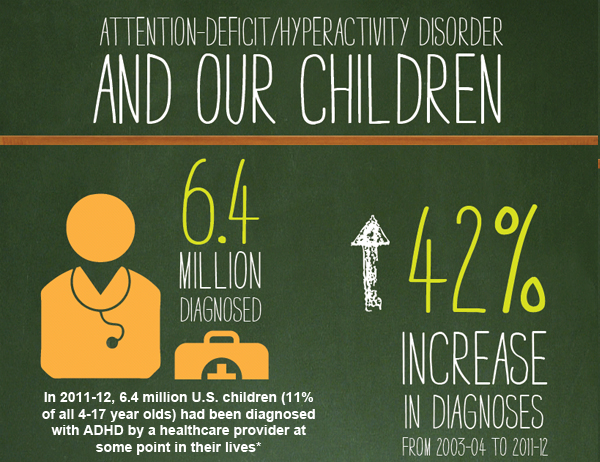
The medications on the market will certainly improve your focus and productivity. When you take the pill in the morning, it starts to kick in around an hour after. Once it takes effect, you get a stimulating boost. These boosts can feel good, yet at times overwhelming as you get a high feeling similar to recreational drugs such as Ecstasy and Speed. I am familiar with this feeling having experienced recreational drugs in my youth. The reaction is so similar that ADD medication is even sought out on the street, illegally.

I had to write this article and share this information with you because I think it’s important that parents are aware of this before deciding to put their children on these medications. I was on them for around a year when I lived in Miami. They helped me get my work done efficiently but when the “high” wears off, you crash. The crash involves feelings of isolation, coldness and a feeling of disconnection from the world. If you are self-aware, you can clearly sense that your body and spirit not responding well. This crash can continue for hours and wears off slowly. The next day comes, and you basically experience this same pattern every day that you take a pill.
It is always important to get into the habit of listening to what your body is telling you. The above symptoms are serious signs that your body isn’t approving of the medication.
For me, when it started to wear off around 5 o’clock, I would start to shiver. My house was warm, but I would freeze no matter how high the heat was cranked up. This is not the case for everyone. Everybody reacts differently to the chemicals. My coldness was a sign that my blood was not flowing properly. As soon as I stopped the medication, I no longer felt this side effect.
There’s a lot of information out there saying you shouldn’t just stop the meds suddenly. I don’t encouraging people to stop suddenly simply because I don’t know enough about this process. There are reported cases where people didn’t do well after stopping abruptly. I can only speak from my experience. Eliminating them from my life cold turkey felt great. I had no regrets and I didn’t look back.
I would rather have slightly less focus and more passion in my life than have daily crashes, anti-social tendencies and toxic chemicals damaging my body.
Having said that, it was hard for me to make the decision to stop taking the pills. I tried them again this year because my intense passion and desire to do so many things, often leads me in a million different directions. Trying to do everything at once and getting nothing done perfectly. It’s hard for me to focus for long periods, and I would get so much more accomplished when I took a pill. A task that would take me 4 hours, I could achieve in half the time.
How do I feel after cutting them out? MUCH BETTER! I’ve been managing just fine without them and it’s actually been empowering! I feel grounded and nurtured through my own true efforts and not by the quick fix of a pill.
Everyone experiences some level of stress from living in a world where we are, in many ways, enslaved by a corrupt system. There are a lot of us-even the best of us that are becoming rather zombielike.

We all need to wake up and make a change. We need to all take part in fixing these problems and take charge of creating better solutions. Solutions such as growing our own fruits, vegetables, and herbal medicines; learning to be free in our minds; as well as finding solutions to problems and acting on them. Building the lives we dream of and deserve are why we are here.
Children, teens and adolescents are part of this as they are our future. The earlier you teach them sustainable inner practices, the better you equip them for what is ahead and show them how to be meaningful participants in the world.

If I could go back and do one thing, it would be gardening daily with my daughter from the time she was a baby. This intimate connection to our earth is what will ultimately bring truer fulfillment and happiness. Healthy habits are more easily formed in the earlier stages of your child’s life.
Giving a child a pill to cure certain things runs the risk of a lifetime habit of taking pills for healing and thus avoiding facing any deeply rooted issues.
We all carry within us, wounds. Some wounds possibly from past lives, but most certainly from this present one. These deeper wounds prevent us from focusing more sharply and play a role in our self-love & compassion-or lack of it. We are all truly amazing souls, and often our untreated wounds will keep us from realizing our true potential. Both adults and children must address those deeper core issues. In doing so, we live more spirited, purposeful and healthy lives.
When we take care of ourselves and face those core issues, we can heal naturally without toxic chemicals. A much truer route to healing.

The pharmaceutical pills used to treat Attention Deficit Disorder will often just mask the core issues. It does not cure them.
I admit it is not an easy task, and it takes a lifetime of dedication.
Isn’t being true worth the effort?
You can sweep the dust under the couch, and it may look cleaner, but that dust is still there, building up with each passing day. In the back of your mind you know it’s there. At one point if you truly want a clean home, you will have to move the couch and do a big clean up.
Investigating what those deeper issues are within yourself or your child and making a commitment to rise above them, is a great beginning. Everybody’s wounded soul conflicts are unique and can change through time. Unresolved traumas can travel with us through lifetimes.
Changing diet, toxic habits that are draining you, poisonous relationships and negative thought patterns can help develop a greater acceptance and ability to surrendering gracefully to change. After all, change is a congruent part of life and rather inevitable.
Make peace with it and learn to flow with the waves. Attaching yourself to anything too tightly leads to suffering. Learn the art of letting go at each moment, each day. Be a creator and keep turning the page.

I’ve tried nearly all the varieties of ADD medicine. And they all more or less have the side effects I mentioned earlier. After my experience, I feel it’s important to share with others and warn people. I find it most alarming that children are taking them. I can’t imagine how pure little bodies are meant to tolerate such harsh chemicals or suffer from any of these serious side effects.
I’m not justifying by any means that it’s better for adults to take the pills but at least they have some life experience and can be conscious of the reactions to the medication. They are able to take a mature step back and recognize that some of the symptoms they are experiencing are not normal or healthy. Children, especially the younger ones, don’t really have this option.
Both children and adults can easily grow accustomed to the side effects and often tolerate them.
They learn to live with the crashes-desperate to keep the desired focus, productivity and stimulation. Not everyone recognizes that feelings such as depression or withdrawal are often being triggered or enhanced by the drugs. It especially goes unnoticed with children for they don’t fully understand what it is they’re experiencing.
The question that lies ahead now is, how can we treat this naturally without resorting to unhealthy chemicals?
I believe a combination of natural plant medicine, a healthy diet and commitment to caring for one’s soul can help heal on a much deeper level than pharmaceuticals. Living with purpose, truth, freedom, dreams, courage and self-love are all integral parts of healing.

Standing up for justice, world peace, our planet earth, and not supporting corrupt businesses that don’t have the peoples’ best interests at heart are also, believe it or not, connected to healing. Universally, we all face a form of illness by inhabiting a planet with corrupt leaders, large pharmaceutical industries and corporations that are running much of the show.
The system influences and enslaves us all- much more than we are willing to see and admit. Sometimes, to escape from it, you must step outside of the box.
Think about McDonalds for a moment. The food was clearly proven to be unhealthy. Why would anyone want to keeping running a business that was poisonous to people? Money. You would imagine they would choose to invest in an alternative money-maker that maybe did something good for the planet. Or completely change the menu. Sadly, this hasn’t been the case. There is enough wealth and abundance to solve world hunger and yet the struggles on planet earth seem to continue.
We can knock the big guys and point the finger all we want but who is to blame? I’d say to some degree, us! The people. These corporations and corrupt institutions exist because we support them. They exist because they have a market!
Why have we become such zombies in our culture? I won’t get in to all the different conspiracy theories of why that could be but rather suggest that people, at the very least, think carefully before you invest a dollar in anything. Think twice to be sure you want to support that cause or not.
Be the change you wish to see in the World – Ghandi

I don’t have the miracle cure to treat ADD naturally.
You don’t need to have the perfect cure. What you need is the will to explore different natural alternatives and see what works for you.
Some days may be challenging. Other days, you might feel very blessed. Such is life. But at least you honor your sacred vessel when you try. When you make that commitment to take care of your body, mind and soul, the universe brings the perfect medicines that are meant for you.
If you are a parent contemplating giving your child ADD medication, my advice to you is to try taking the meds first yourself for a week.
Yes, I know it sounds crazy, but I’m confident that once you experience the intensity of the drugs for yourself you might have serious second thoughts. It’s good to know what you’re giving to someone. I never serve food without tasting it a little myself to make sure it’s good.
Now that I’ve committed to stopping the meds and treating myself naturally, I will begin exploring…
Natural Remedies that can improve the Symptoms People Experience with ADD. Remedies given to us by Mother Nature that help treat a person as whole.
I will share these discoveries and experiences in future articles. Stay tuned! I look forward to sharing the preparations that worked for me, in hopes that they work and help others too. Also coming up in future posts, my experience with Cannabis oil for Healing. The good and the bad.
If you are living in the Montreal area and looking for natural healing help from a professional holistic practitioner for yourself or a child, please feel free to be in touch or consult the Natural Healing section of the Back to Eden Healthy Living Directory
By: Shoshana Finn
Investing in the earth vs investing in a bank, which is more rewarding?
Today I was thinking about how I come across a lot of people who see the spiritual or (at the least) the nutritional value in gardening, but for some reason think it’s not financially rewarding and use that as an excuse to opt out of even trying. When I tell people that I see immense value in growing a food garden each year some of them say things like “I don’t have time for playing in the mud, gardening doesn’t pay the bills!” But is that really true?
According to the government the average Canadian household spent $8109.00 on groceries in 2014 ( a very conservative amount in my estimation). And how much of that food do you think is processed, contains GMOs, or is chemical laden leading to a shorter and less full life, with big medical expenses down the road. Spend $20-40 on basic supplies and with only a weekend or two spent preparing the soil in the garden or (growing containers for your balcony, windows etc) each year, and a quick watering before work each morning Will result in a significant amount of veggies (hundreds of dollars worth of fresh organic produce). Truthfully, anyone can do this to some extent, and in doing so feel good knowing they are doing their best to feed their family real- healthy- nutritious food.
In my previous post I talked about “investing in the earth” vs investing in a bank, and spoke about the value to one’s spirit, body and to the future generations. I want to now address the potential material rewards of investing one’s money and time into the earth, vs investing that money and time into a bank.
While sorting and packaging the heirloom kale seeds I had saved from last year’s garden it occurred to me that not only is investing in the earth more nutritionally, spiritually, and emotionally rewarding than investing in a bank, it can be more fiscally rewarding as well. The fact is when you invest in a garden you end up with an abundance of not only crops with more than enough to share with friends/neighbours but also the abundance of seeds that can be saved from each harvest. I began to contemplate what the latent money value of these seeds were (if they were all to be grown and harvested from a garden), and then proceeded to compare my original investment in the package of organic kale seeds (less than $5 ) which I “deposited” into the earth to what kind of return I would have gotten had I invested that five dollars into a bank. Here’s what I came up with:
Investment of less than five dollars on kale seeds (about 20 heirloom “red russian” seeds) result/return after one year : ten healthy adult kale plants which I harvested semi-daily from June until November ( We ate about ten dollars worth of kale at local store prices a week from the garden, so after 6 months they produced about 240 dollars worth of organic kale). So from less than a five dollar investment (along with time spent every few days on watering and tlc) I got $235.00 return from investing in the earth (a 4800% increase)! Now how much return would I have gotten if I invested 5 dollars in a bank after one year? Well let’s say the savings account has an interest rate of 3% (which is being generous for most banks) after one year from my original 5 dollar investment I would have a whopping 15 cents return!
After that first year of investing in the earth by “depositing” the kale seeds and letting the plants go to flower (on top of my steady harvesting) I was able to save well over a hundred seeds from each plant at the end of the year (which will amount to over one thousand viable seeds achieving maturity/full harvest). Since with gardening (“investing in the earth”) there is always abundance and more than enough to go around, I will share many seeds with friends, family and neighbours. I then decided I wanted to project this investment comparison further in compounding it over multiple years. I will give about ten seeds to each person/family and all I will ask in return is that they save seeds from their kale plants and share them with others. I wondered how much actual money value in kale could be grown, harvested and enjoyed after seven years of this “pay it forward model” of gardening kale, saving seeds and sharing the next year. In the interest of making a fair calculation I wanted to be very modest with my estimates for projected harvest yields and seeds able to be saved each year (considering not all plants will grow in great soil under ideal conditions). So I estimated that for others each ten kale plants would yield a minimum of 10 pounds of kale annually (amounting to 30 dollars worth of organic kale at $3.00 a pound). And instead of assuming they will be able to save 1000 seeds like I did, I estimate they will save well over one hundred (amounting to one hundred viable seeds that grow into harvestable mature plants.
So let’s recap; with my 1000 seeds (from my first harvest) being given to 100 families/gardeners, after the second year a total of $3000.00 worth of organic kale would have been grown, harvested and enjoyed by those people (“collective beneficiaries” of my investment in the earth). That means, from my original money spent (less than 5 dollars) invested in a pack of seeds, some water and tlc, and sharing the resulting seeds after only two years a return of $2995.00 would be collectively accessed and enjoyed. While that same five dollars invested in a bank would have earned me you guessed it! A colossal 30 cents! :)
With an original investment of five dollars After seven years continuing this ‘pay it forward model’ investing in the earth compared to investing in a bank you would have this:
Bank total (money value accessible by one): $6.17
Earth total (latent collective money value) : $30,000,000.00
When we choose to give back to the living planet that sustains us and share the resulting abundance, the rewards increase exponentially and continue to give back year after year.
Let’s invest in a future where food, health, and happiness are abundant and common place. We can make the choice to truly care for our body and in the process give back to the earth that gives so much to us. Each of us can do this by planting and maintaining an organic food garden of our own. Thank you to those who care enough about the earth to do this without any hope for financial reward, but for those of you who need to measure the reward in dollar signs, the numbers don’t lie, choosing a bank over the earth is clearly a poor investment choice.
The Bees that Make Honey with Cannabis Resin

He is an artisan, locksmith and above all a beekeeper, although he does not carry out the last profession like others. His more than 4300 Facebook followers and 700 Instagram followers are looking for something that nobody else can offer: marvellous photos where cannabis plants receive an agreeable visit. Although most of us would be scared to find bees on our crop, that is the main goal of this 39-year-old Frenchman who describes himself as an advocate of medical cannabis and of legalisation.
He is called Nicolas, although he is known as Nicolas Trainerbees, a nickname that is not a mere coincidence. He has been using it for more than 20 years because he has always liked to spend time with all kinds of animals, especially insects, and above all, bees. He observes them, and according to him (although without revealing his tactics), he trains them so that they behave as he wishes.
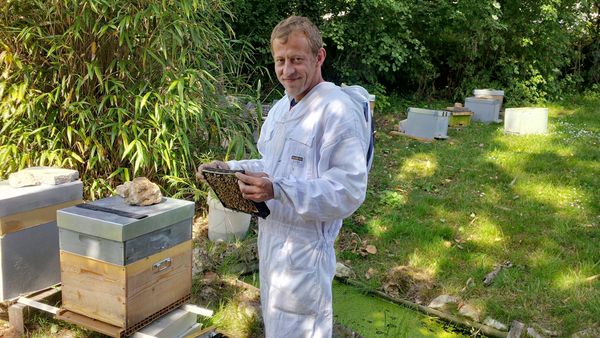
“I have trained bees to do several things, such as collect sugar from fruits, instead of using flowers”. In addition to beers, he has also worked with tarantulas, lizards and ants because, as he explains, he has “been passionate about nature since childhood”. This has led him to learn about the world of animal biology, entomology, cannabis growing, improving all kinds of plants and everything related to the world of beehives.
For a while now he has been working with bees that produce “cannahoney”, the name he decided to give to his peculiar cannabis honey. However, he modestly says that he has not created honey, “but rather a training technique whereby the bees collect the resin and use it in the beehive”. Afterwards, the final substance is the sole work of the little insects.
How did a beekeeper decide that his bees should obtain nectar from cannabis? Firstly, due to personal experience. Nicolas has been hyperactive since the age of 7, and that along with an educational system that labelled him as “unsuitable”, soon led him to leave school. At a young age he discovered that the plant helped him to channel the problem and, therefore, “I began consuming before the age of 10”, he states.
Years later, many people that know about his abilities raising and training bees began to ask him why he would not start applying them to the world of cannabis, and get the insects to create a kind of honey with the cannabis plants. He had realised that, by uniting the properties of both things, and if the animals managed to use the resin correctly, he would obtain a great result: “For some time I had known about the health benefits of bee products such as honey, propolis, pollen, wax and royal jelly and also about the benefits of cannabis”, and so he decided to take notice of the requests.
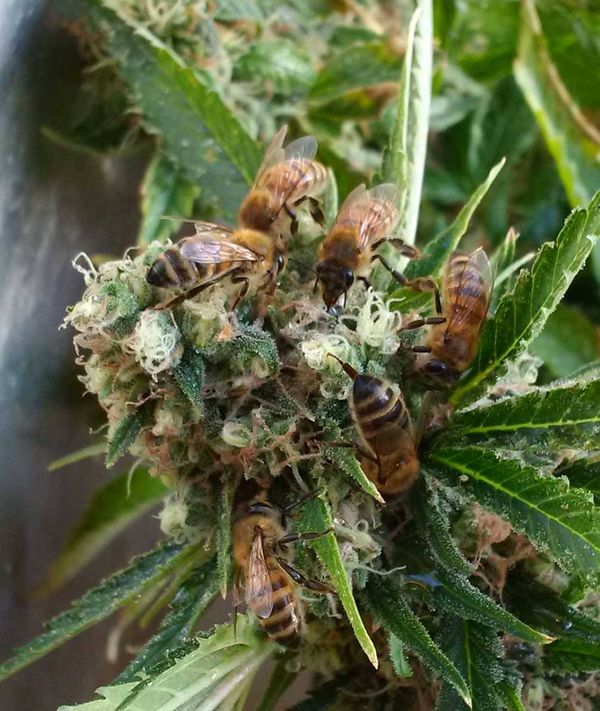
Also, “everything that passes through the body of a bee is improved”, he says, given that their enzymes make the nectar turn into the desired honey. The resin obtained from willows, poplars and other trees is turned into propolis, which is an antiseptic, antibiotic, antifungal, antibacterial and also has healing properties. “So if the bee took the resin from cannabis it would also be very beneficial”. “The aim arose for me to get the bees to obtain this resin “, he comments.
From that moment onwards (back in 2006) he spent time observing them, examining the hives and the behaviour of their members and thinking that there had to be a way of attracting a good group of insects to the resin. “That was the starting point for my investigation”, he explains. When he began his inquiries he found that up until then nobody had brought together both worlds, and the most sceptical people even told him that cannabis was not a typical plant for obtaining honey, therefore it would be impossible to get the bees to go by themselves to collect its particular pollen. Nicolas has shown the most simple-minded people that they were wrong.
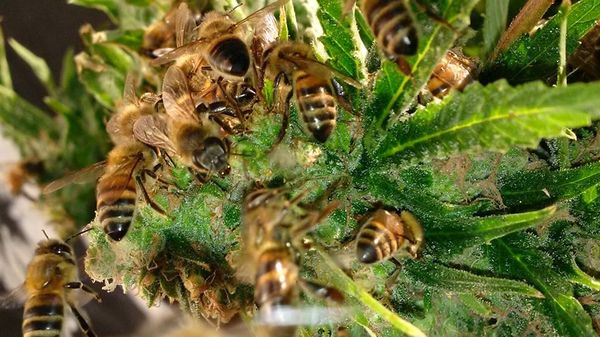
Following several tests and lots of observation he managed to get results from his training in 2013, “with the enormous surprise that the bees used the resin as propolis” and also to create honey with the same effects as cannabis. Its terpenes have “a delicious and pleasant taste” that are reminiscent of the fresh plant, although its taste changes slightly from one crop to another.
“Cannahoney” normally has “quite a floral” aroma and a colour that slightly changes depending on the varieties, although it usually ranges from light green to white or yellow. The substance “is not smoked, it is ingested and it is good for health”, explains the creator.
Nicolas uses varieties of cannabis that he has created. He says that, “the bees accept any strain”, therefore he also uses already existing types. In fact, the last batch of honey was created using Californian Orange.
Before he obtained his first results, some people dared to say that cannabis was harmful for bees. He was totally convinced that was not the case, but he had to wait two years until the project was well consolidated and he was able to demonstrate that the plants had no negative impact on the insects. “The bees that produce the cannahoney are not affected by cannabinoids because they do not have an endocannabinoid system”, he explains.
He now has 30 beehives, and he uses many of them for his cannabis honey project. However, he faces difficulties living in a country that puts up a lot of barriers in relation to all cannabis matters, therefore he is forced to grow his plants in open air spaces, far from his home. In this situation he takes a lot of risks, especially trying to transport his plants close to the hives during the necessary time so that the bees can take advantage of their new “pollen”.
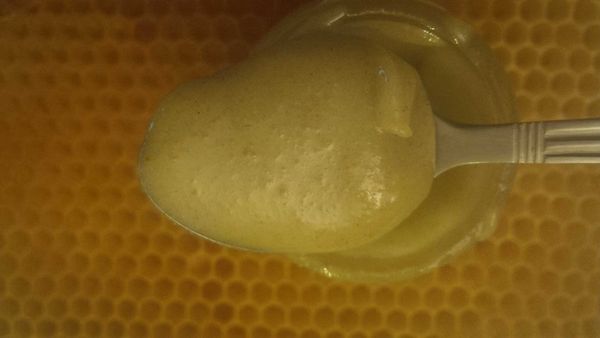
His situation does not prevent him interacting with his followers over social networks, where he normally publishes lots of research studies that back the medical properties of cannabis that he himself experiments with. The photographs that he publishes speak for themselves; in them it is possible to see not only the plants accompanied by the bees, but also, for example, crepes created by him and served with his honey. Nicolas dedicates almost all of his time to this profession; therefore he has no website or blogs: “I work alone with my wife and I do not have time or money to do much else”.
Such attractive photos ensure that many users ask him endlessly when they will be able to get hold of the substance, although he admits that he still requires a more detailed analysis in order to determine all of its properties. Despite this, he states that three people with anxiety tried a few spoonfuls “and felt a lot better”.
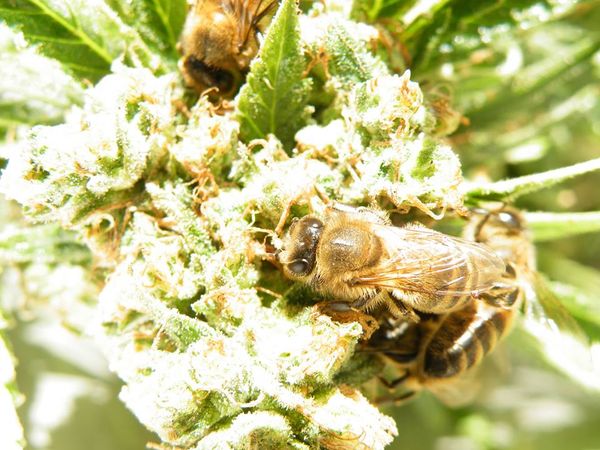
His progress is now an example to follow for many other beekeepers. Now, his main aim is to leave France in order to treat his illness legally and also to work with more freedom and get professionals in the sector to analyse his work. His next destination, if everything goes as he hopes, will be Spain.
——–
Latest Promotion! Don’t miss out…
Dirt is Better Antidepressant Than Prozac
There’s no denying that standing in the garden and picking your first summer tomato gives you a good feeling. Even in an urban environment a small pot of basil on the windowsill can brighten your day. But is there a scientific reason that getting our hands dirty makes us feel good?
In 2007, Christopher Lowry, associate professor in the Department of Integrative Physiology and Center for Neuroscience at Universtiy of Colorado Boulder, and a team of researchers published an article in Neuroscience that had people wondering if dirt was the new Prozac. The study examined a specific soil bacterium, Mycobacterium vaccae, and its potential role in the regulation of emotional behavior. In other words: did the bacteria have antidepressant qualities?
“Soil, especially soil with abundant organic matter, contains saprophytic bacteria, meaning that they live off of dead and decaying organic matter, such as leaves,” says Lowry. “Humans coevolved with these bacteria over millennia and they have been shown to affect the immune system in a way that suppresses inflammation. This means that these bacteria may be helpful in preventing or treating diseases with excess inflammation.”
So what exactly are diseases with “inflammation?”
“This includes conditions like asthma, but also, perhaps, stress-related psychiatric disorders characterized by elevated inflammation, such as major depressive disorder or post-traumatic stress disorder,” says Lowry.
It’s not so surprising that we may benefit from microorganisms in the soil, given that we need them to live.
The regulation of the immune system is indeed connected to the biodiversity of the natural environment. We benefit from being outdoors and exposed to things like soil and animals, because of the fact that we’re exposed to microorganisms.
“A human is not an individual. We are ecosystems. At least 90% of the cells in a human body are microbes, most of them living in the gut,” says Graham Rook, professor at the Centre for Clinical Microbiology at the University College London. ” These organisms constitute the ‘microbiota,’ and the microbiota should be regarded as an organ, just like your liver or your brain.”
While the organisms that make up that microbiota are inherited – like we inherit genes – there is a proportion of the organisms that come from elsewhere, and that’s where things get interesting.
“An unknown proportion of the organisms that constitute the microbiota come from the environment,” says Rock. “It now seems that the most likely explanation for the health benefits of exposure to farms, dogs in the home, and green space is that the natural environment (including the animals in it) is a resource that provides organisms as we need them.”
Just last year Rook published an article that explored those connections, concluding that the regulation of the immune system is indeed connected to the biodiversity of the natural environment. We benefit from being outdoors and exposed to things like soil and animals, because of the fact that we’re exposed to microorganisms.
The psychological benefit of nature has been well documented. When it comes to being happy or not, many studies show that psychiatric problems are more common in urban than in rural communities. That makes Lowry’s and Rook’s research interesting, as it gives us a better understanding of exactly why being outside, in a garden or on a farm, makes us feel good.
“People usually assume that the health benefits of exposure to green space are due to exercise. In fact two large studies now demonstrate that although exercise is definitely good for you, it does not explain the beneficial effect of green space,” says Rook. “Contact with microbial biodiversity is looking like the most probable explanation for the green space effect.”
So if microorganisms are good for you, how much exposure do you need to have in order to reap the benefits? How many days in the garden do you need to commit to?
That’s what’s still unclear.
“We don’t yet know how much exposure to environmental bacteria (for example, through activities that involve contact with the soil) is enough to confer health benefits,” says Lowry. “It is clear, however, that exposure through breathing or consuming specific types of environmental organisms has the capacity to reduce inflammation and confer health benefits.”
Which means that you now have another reason to go outside and get your hands dirty.
Seattle. Sixth City to Sue Monsanto Over PCB Contamination
The city of Seattle is suing agrochemical giant Monsanto over the contamination of the Lower Duwamish and city drainage pipes with polychlorinated biphenyls (PCBs).
The complaint, filed Monday in federal court, alleges that Monsanto knew how toxic PCBs were to humans and the environment, but continued to produce and sell the chemicals for decades anyway. Seattle is now the sixth city to sue Monsanto over PCB contamination, following San Jose, Berkeley, Oakland, San Diego, and Spokane.
“Long after the dangers of PCBs were widely known, Monsanto continued its practice of protecting its business interests at our expense,” City Attorney Pete Holmes said in a statement. “The City intends to hold Monsanto accountable for the damage its product wreaked on our environment.”
The Lower Duwamish is now considered a federal Superfund site, ranking as one of the most toxic waterways in the United States. The EPA estimates that the full cleanup of the waterway will cost $342 million.
According to the city, PCBs have been detected in 82 percent of drainage pipe samples and 73 percent of street right-of-way catchment basin samples in Lower Duwamish drainage basins. PCB exposure has been linked to several different different types of cancers, as well as endocrine, reproductive, immune system, and nervous system issues. Exposure is wide-ranging; PCBs have been found in everything from fish to human breast milk.
I’ll be heading to a 10:30 press conference at City Attorney Pete Holmes’ office to learn more. In the meantime, read the complaint here.
100 Amazonian Communities Construct Government To Protect Their Lands
The Wampis people of Peru recently created the nation’s first Autonomous Indigenous Government, which does not seek independence from Peru but intends to protect their rights and their territory.
On November 29, in the town of Soledad, the Wampis announced the formation of their autonomous government that brings together 100 Wampis communities, representing over 10,000 people that reside in the northern Amazonian part of Peru which extends across 3.2 million acres (roughly the size of the U.S. state of Connecticut).
The process that lead to the formation of the new government took place over several years, with over 50 community meetings and 15 general assemblies according to Wampis officials. They were inspired to create the new government by the United Nations Declaration on the Rights of Indigenous Peoples as well as Peruvian laws that acknowledged indigenous rights.
The motivation for the new government also grew out of frustration with how Wampis territory was being sold or given away, without their consent, to various businesses.
One of the Wampis leaders, Andres Noningo Sesen, explained some of their goals in a press statement released in December.
“We will still be Peruvian citizens but now we will have our own government responsible for our own territory. This will allow us to defend our forests from the threats of logging, mining, oil and gas and mega dams. As every year goes by these threats grow bigger,”
-Andres Noningo Sesen, Wampis Leader
One of the defense related examples given by Wampi leaders is their sustained resistance to gold mining operations in their territory by the Afrodita, S.A. Company which was finally ordered to suspend operations along the Cenpea and Maraño rivers. Both rivers suffered from severe mercury and cyanide stemming from mining activities in the area and indigenous resistance to the pollution is credited with forcing the suspension.
“This unity will bring us the political strength we need to explain our vision to the world and to the governments and companies who only see the gold and oil in our rivers and forests. For them, too often we are like a small insect who they want to squash. Any activity planned in our territory that will affect us will now have to be decided by our own government which represents all our communities,”
-Andres Noningo Sesen, Wampis Leader
The Wampis communities started the process towards autonomy by passing a statute known as the Statute of the Autonomous Territorial Government of the Wampis Nation, in which they outlined their plans for the future including protection of religion, spirituality, education, language and the recovery of ancestral place names.
While Peruvian officials have not publicly acknowledged or commented on the formation of the Wampis Autonomous Indigenous Government, Wray Perez Ramirez, the new President of the Autonomous Territorial Government has expressed confidence in their effort.
“We trust that the Peruvian State will support our initiative. This will assist in the compliance of their obligations to respect the fundamental rights of the Indigenous Peoples to determine their own future,” Ramirez said.
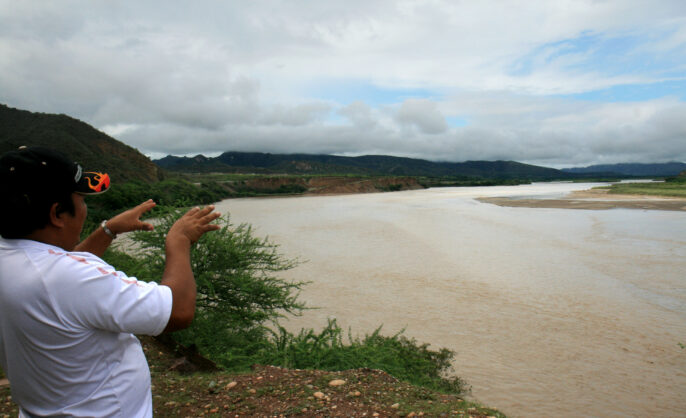
![]()
UN Says Small-Scale Organic Farming Only Way to Feed the World
Even though this article may have been published a year or two ago, it still speaks to the importance of our need to focus our anti-climate change practices on regenerative agriculture. That is why we will continue to republish this so it can become common knowledge. We understand there may be sympathizers for GMO and monoculture farming – the other side of the story must also be heard. – Valhalla
Even as the United States government continues to push for the use of more chemically-intensive and corporate-dominated farming methods such as GMOs and monoculture-based crops, the United Nations is once against sounding the alarm about the urgent need to return to (and develop) a more sustainable, natural and organic system.
That was the key point of a new publication from the UN Commission on Trade and Development (UNCTAD) titled “Trade and Environment Review 2013: Wake Up Before It’s Too Late” which included contributions from more than 60 experts around the world.
The cover of the report looks like that of a blockbuster documentary or Hollywood movie, and the dramatic nature of the title cannot be understated: The time is now to switch back to our natural farming roots.
The findings on the report seem to echo those of a December 2010 UN Report in many ways, one that essentially said organic and small-scale farming is the answer for “feeding the world,” not GMOs and monocultures.
According to the new UN report, major changes are needed in our food, agriculture and trade systems, with a shift toward local small-scale farmers and food systems recommended.
Diversity of farms, reducing the use of fertilizer and other changes are desperately needed according to the report, which was highlighted in this article from the Institute for Agriculture and Trade Policy.
The Institute noted that these pending deals are “primarily designed to strengthen the hold of multinational corporate and financial firms on the global economy…” rather than the reflect the urgent need for a shift in agriculture described in the new report.
Even global security may be at stake according to the report, as food prices (and food price speculating) continue to rise.
“This implies a rapid and significant shift from conventional, monoculture-based and high-external-input-dependent industrial production toward mosaics of sustainable, regenerative production systems that also considerably improve the productivity of small-scale farmers,” the report concludes.
You can read more about the report from the Institute by visiting their website here.
Source: althealthworks.com
Some are doing the local organic farming right.
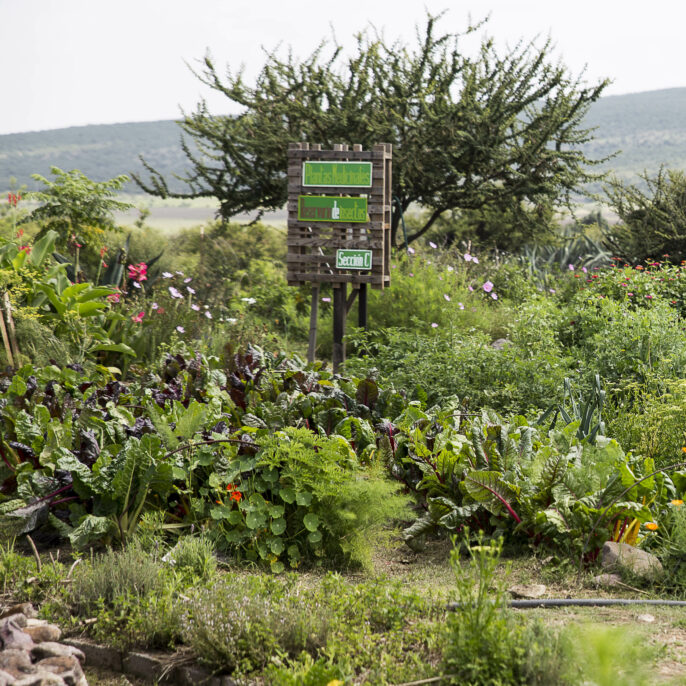
#1Love
Ugandan Engineers Built A Solar-Powered Bus for African Roads
Ugandan engineers have built a solar-powered electric bus that they say is a first of its kind in East Africa and think it will revolutionize the automotive market in the region. The Kayoola, as its called, is a 35-seater that can run for up to 80 kilometers on two power banks that can also be recharged by solar panels installed on the roof of the bus.
Paul Musasizi, chief executive officer of Kiira Motors Corporation (KMC), the state-funded company behind the vehicle, says with the potential for solar power in Uganda, it only made sense that engineers started to leverage the energy source for cars.
“The bus is purely electric and our idea is to test the strength of solar energy in enabling people to move,” he told a local newspaper.
The company built the prototype with funds from the Ugandan government. But KMC is hoping to attract investors to the project to start producing the buses for the mass market by 2018 at a retail price of $58,000. Typically, 35-seater buses retail between $35,000 to $50,000.
“As we continue with developing concepts, we are also studying the market,” Doreen Orishaba, one of the engineers in the project, told Uganda’s Observer newspaper. “We want to see that we don’t make vehicles for stocking but for production on orders.”
This is not KMC’s first foray into energy efficient car-making. Last year, the company introduced the Kiira Smack, a petrol-electric hybrid that it said would come into the market by 2018 as well for a $20,000 price. But analysts were doubtful at the time of the project’s commercial viability. The price could prove prohibitive, they argued, in a market that sells an estimated 20,000 cars a year. Additionally, in a part of the world where electricity is not a widely available commodity, electric dependent cars could put undue pressure on national grids.

But by using solar as a power source for the Kayoola, KMC may have found a way to overcome that challenge in this instance.
“Uganda being one of the 13 countries positioned along the equator, gives us about eight hours of significant solar energy that can be harvested,” Musasizi says.
Japan Begins Construction On World’s Largest Floating Solar Farm
What happens when a country wants to boost their generation of solar power, but doesn’t have enough land for the number of panels needed? Well, the Japanese, among a few others, have been developing a novel solution: float them on large reservoirs. This week saw the country begin construction of the largest floating solar farm in the world, in which panels will eventually cover a 180,000 square meter area (2 million square feet), and with an aim of producing enough electricity to power 5,000 local homes.
When it reaches completion in 2018, the Yamakura dam floating power plant will have a total output of 13.7 megawatts (MW) from 51,000 panels. Despite breaking records on water, this figure falls way short of the record for land-based photovoltaics, with the current record breaker there being the Solar Star power station in California, churning out an impressive 579 MW, powered by 13 square kilometers (5 square miles) of solar panels.
Japan has seen a recent rise in the use of renewable energy sources, after the Fukushima disaster in 2011 meant all nuclear power plants were shut down. This led to a massive increase in the burning of fossil fuels to meet the nation’s electricity demand, heavily impacting Japan’s climate and carbon output commitments. In the face of this, there has been an increased interest in green energy.
This isn’t the first floating solar farm in Japan, as there are currently several others already up and running in the mountainous, space-starved country. The technology used is not anything new, it is readily available and accessible, so whether it will catch on in other countries remains to be seen. While it is still cheaper to build them on land, this is not always an option for those with limited space to do so.
Ecuador To Sell A Third Of Its Amazon Rainforest To Chinese Oil Companies
We believe that the Amazon is not for sale, nor is it for expanding a primitive source for fuel. Here is a link where you can join a petition by our good friends at AmazonWatch. – Valhalla mgnt
http://amazonwatch.org/take-action/stand-with-the-sapara-people-to-reject-todays-sham-contract
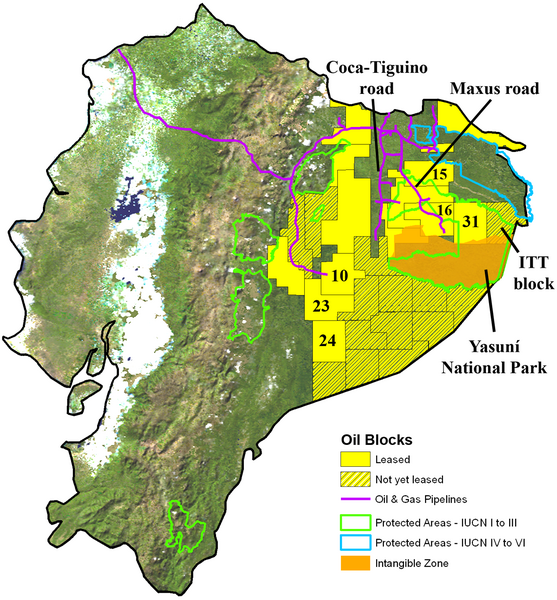
Ecuador is planning to auction off three million of the country’s 8.1 million hectares of pristine Amazonian rainforest to Chinese oil companies, Jonathan Kaiman of The Guardian reports.
The report comes as oil pollution forced neighbouring Peru to declare an environmental state of emergency in its northern Amazon rainforest.
Ecuador owed China more than $7 billion – more than a tenth of its GDP – as of last summer.
In 2009 China began loaning Ecuador billions of dollars in exchange for oil shipments. It also helped fund two of the country’s biggest hydroelectric infrastructure projects, and China National Petroleum Corp may soon have a 30 per cent stake in a $10 billion oil refinery in Ecuador.
“My understanding is that this is more of a debt issue – it’s because the Ecuadoreans are so dependent on the Chinese to finance their development that they’re willing to compromise in other areas such as social and environmental regulations,” Adam Zuckerman, environmental and human rights campaigner at California-based NGO Amazon Watch, told the Guardian.
The seven indigenous groups who live on the land are not happy, especially because last year a court ruled that governments must obtain “free, prior, and informed consent” from native groups before approving oil activities on their indigenous land.
“They have not consulted us, and we’re here to tell the big investors that they don’t have our permission to exploit our land,” Narcisa Mashienta, a leader of Ecuador’s Shuar people, said in a report.
Dan Collyns of The Guardian reports that “indigenous people living in the Pastaza river basin near Peru’s border with Ecuador have complained for decades about … pollution,” which has been caused by high levels of petroleum-related compounds in the area. The Argentinian company Pluspetrol has operated oil fields there since 2001.
New species of bird discovered in India and China
A new species of bird has been described in north-eastern India and adjacent parts of China by a team of scientists from Sweden, China, the US, India and Russia, led by Professor Per Alström, Uppsala University and Swedish University of Agricultural Science.
The bird has been named the Himalayan Forest Thrush, Zoothera salimalii. The scientific name honours the great Indian ornithologist Dr Sálim Ali (1896-1987), in recognition of his huge contributions to the development of Indian ornithology and nature conservation.
The Himalayan Forest Thrush was first discovered when it was realised that what was considered a single species, the Plain-backed Thrush Zoothera mollissima, was in fact two different species in north-eastern India.
What first caught the attention of the scientists was the fact that the ‘Plain-backed Thrushes’ in the coniferous and mixed forest had a rather musical song. This was in contrast to individuals found on bare rocky ground above the treeline in the same area, as they had a much harsher, scratchier, more unmusical song.
Studies of museum specimens in several countries revealed consistent differences in plumage and structure between birds that could be assigned to either of these two species. It was confirmed that the species breeding in the forests of the eastern Himalayas had no name.
It was suggested that the high-elevation Plain-backed Thrush be called the ‘Alpine Thrush’ instead, while retaining the scientific name of the ‘original’ species, Zoothera mollissima, in accordance with international nomenclatural rules.
Further analyses of plumage, structure, song, DNA and ecology from throughout the range of the ‘Plain-backed Thrush’ revealed that a third species was present in central China. This was already known, but was treated as a subspecies of ‘Plain-backed Thrush’. The scientists called it Sichuan Forest Thrush.
The song of the Sichuan Forest Thrush was found to be even more musical than the song of the Himalayan Forest Thrush.
DNA analyses suggested that these three species have been genetically separated for several million years.
Genetic data from three old museum specimens indicated the presence of yet another unnamed species in China. Future studies are required to confirm this.
The Himalayan Forest Thrush is locally common. It has been overlooked until now because of its close similarity in appearance to the Alpine Thrush.
New bird species are rarely discovered nowadays. In the last 15 years, approximately five new species have been discovered annually on average, mainly in South America. The Himalayan Forest Thrush is only the fourth new bird species described in India since the country achieved its independence (1947).
More information: Paper: dx.doi.org/10.1186/s40657-016-0037-2
Provided by: Uppsala University
Montreal Mayor Denis Coderre says Energy East pipeline too risky
Montreal Mayor Denis Coderre announced the city’s official opposition to proposed Energy East pipeline project Thursday, saying the potential risks outweigh its possible economic benefits to communities including his.
Coderre was joined by mayors including Laval and Longueuil who make up the Montreal Metropolitan Community.
“We are against it because it still represents significant environmental threats and too few economic benefits for greater Montreal,” said Coderre.
The announcement follows extensive public consultations the organization did last fall, he said.
The City of Montreal’s official opposition is the latest challenge to TransCanadaCorp.’s proposed pipeline project, which would carry 1.1 million barrels a day of oilsands crude through Quebec to an export terminal in Saint John, N.B.
The project would include the existing TransCanada pipeline as far east as Montreal plus a new pipeline through Quebec.

Coderre has voiced concerns about the project in the past, but until now has not taken an official position on it.
Laval Mayor Marc Demers said in September that he is “firmly against” the proposed pipeline.
Earlier Thursday, Energy East spokesman Tim Duboyce said the company will wait to see precisely what the mayors have to say and take it from there.
“We see this as an opportunity to have a document to help lay out what those concerns are so we can continue to consult with elected officials and other stakeholders,” he said.
Efforts to plug Porter Ranch-area gas leak worsened blowout risk, regulators say
Southern California Gas Co.’s effort to plug its leaking natural gas well involves higher stakes than simply stopping the fumes that have sickened many residents of Porter Ranch.
The company also is trying to avoid a blowout, which state regulators said is now a significant concern after a seventh attempt to plug the well created more precarious conditions at the site.
If a blowout occurs, highly flammable gas would vent directly up through the well, known as SS25, rather than dissipating as it does now via the subsurface leak and underground channels.
State officials said a blowout would increase the amount of leaked gas, causing greater environmental damage. That natural gas also creates the risk of a massive fire if ignited by a spark. The risk of fire already is so high that cellphones and watches are banned from the site
California Department of Conservation spokesman Don Drysdale called the possibility of fire “a concern” even without a blowout. The department is the umbrella agency that oversees the oil and gas regulators responsible for well safety.
The chief deputy director of the department, Jason Marshall, and a senior oil and gas field regulator assigned to daily watch at Aliso Canyon, Scott McGurk, told The Times the site and wellhead were made more unstable by the gas company’s attempts to stop the leak by pumping a slurry directly into the well.
The last of those efforts, which stretched over several days beginning Dec. 22, expanded a crater around the wellhead, state and gas company officials said.
The crater is now 25 feet deep, 80 feet long and 30 feet wide, those officials said. The wellhead sits exposed within the cavernous space, held in place with cables attached after it wobbled during the plugging attempt, Marshall and McGurk said. The well pipe and its control valves are exposed and unsupported within that hole, atop a deep field of pressurized gas.
Southern California Gas is now attempting to stop the leak by drilling relief wells to intercept the damaged well. Workers are not expected to reach the base of the well, 1.6 miles below ground, for at least six weeks.
“If the wellhead fails, the thing is just going to be full blast,” said Gene Nelson, a physical sciences professor at Cuesta College. “It will be a horrible, horrible problem. The leak rates would go way up.”
Sempra Energy, which owns the gas company, declined repeated requests from The Times to discuss current conditions at SS25. A gas company spokeswoman said the utility “would not speculate” on those questions.
At a meeting with community representatives last week, the gas company’s senior vice president for operations, Jimmie Cho, said attempts to plug the well from above were halted “for safety concerns.”
“As much as what’s going on is not a good thing, we don’t want to take a risk of that wellhead being lost,” Cho said.
State officials agreed.
“If one pushes too hard … and breaks the well in its entirety, we, the public residents, the operator, have a much bigger problem,” Marshall said.
The gas company would not provide current photos of the site or allow media access. It did not provide a reason.
Aerial photographs obtained by The Times, taken by a pilot who slipped through no-fly zones imposed after the leak began, show the tension cables strung to hold the jeopardized well in place.
The photos, taken five days before the final plug attempt Dec. 22, show that the earth and the asphalt pad that directly surrounded the well are gone, scoured out by the backwash of mud repeatedly forced at high pressure into the leaky well in an attempt to plug it.
Statements by gas company officials and regulators, and descriptions found in internal records describe the conditions around the well. A bridge was cantilevered into place when the crater cut off access to the exposed “Christmas tree” of valves and ports that allow operators to control the well, those officials and documents show.
That wellhead is the only control operators currently have on a well that features a 2 7/8-inch pipe surrounded by a 7-inch casing. Engineering schematics show that the pipe and casing pierce an underground reservoir of gas and that both were used to insert and remove gas from the storage cavern. For all but the top 990 feet, there was no larger pipe to contain a leak if either pipe ruptured.
The two-mile long depleted oil reserve that houses the gas is the largest natural gas storage field west of the Mississippi River. Each fall it is pumped with as much as 86 billion cubic feet of natural gas to run power plants and heat homes in Los Angeles during the winter.
The gas company reported Oct. 23 that gas was escaping through small cracks in the rocky ground around well SS25, which is among 112 former oil extraction wells that have been converted for the natural gas storage operation.
In November, efforts to force heavy mud into the well resulted in blasting open a small vent in the ground from which gas could escape more readily.
By early January, state air quality regulators estimate, the leak had released more than 77 million kilograms of methane, the environmental equivalent of putting 1.9 million metric tons of carbon dioxide in the air.
Independent health impact studies are not yet complete. Mercaptan added to allow gas to be detected by smell has sickened residents more than a mile away, and Southern California Gas is paying to house more than 2,500 in temporary lodging and has installed air purifiers into the homes of a similar number who chose to stay.
Data captured by aerial surveys commissioned by the state Air Resources Board, which monitors pollution, show the amount of methane released increased over the first three weeks of November to 58,000 kilograms per hour from 44,000.
During that time, a Texas well control company was attempting to plug a suspected hole in the 7-inch well casing by pumping it with increasingly heavier slurries of mud. The mud was pushed against pressurized gas in the well, and the slurry began to find its own escape routes, gouging out a growing hole around the well, according to descriptions provided by Marshall, McGurk and by Cho.
During one of those attempts Nov. 13, a hole in the ground opened 20 feet north of the well, McGurk said last week. Gas that had seeped through diffuse rock fissures on the western side of the narrow ridge began streaming instead from the new vent, he said.
In one internal state report obtained by The Times, an agency official described that kill effort as a “blowout to surface.”
“A large column of gas, aerated mud, and rock formed a geyser around the wellhead,” the state observer wrote. “Mud brine also began to flow from around the wellhead fissures.”
McGurk said the vent allowed a “serious amount of gas” to escape, at which point the state began requiring a state regulatory official to be at the site every day.
Three more efforts to plug the well were made in November, with increasing amounts of backwash and scouring along the wellhead itself that left the well jutting out of a deep hole, without surface support, according to interviews, descriptions contained in agency records and company statements.
During that time, a pilot taking weekly readings for the state Air Resources Board noted a spike in the rate of gas being released to the air from that location.
Wal-Mart to close 269 stores, 154 of them in the US
NEW YORK – Wal-Mart is closing 269 stores, more than half of them in the U.S. and another big chunk in its challenging Brazilian market.
The stores being shuttered account for a fraction of the company’s 11,000 stores worldwide and less than 1 percent of its global revenue.
The closures will affect 16,000 workers, 10,000 of them in the U.S.
The announcement comes three months after its CEO Doug McMillon told investors the world’s largest retailer would review its store fleet in amid increasing competition from all fronts, including from online rival Amazon.com.
In the U.S., 154 locations will be closed, most of them small format stores called Walmart Express, which were launched as a test program in 2011. The remaining 115 locations to close are spread over Latin America, mostly in Brazil.
This story will be updated as we learn more information.
Which foods will cost more in 2016?
Bad news for those who eat food: prices will continue to climb in 2016.
This year’s Food Price Report from the University of Guelph’s Food Institute predicts an overall jump in cost between two and four per cent over the next 12 months.
Although the grocery store will get more expensive, before eating the cost of food inflation, check out these tips on how to still shop healthy as food prices climb. For example, substituting expensive nuts with cheaper seeds will provide a similar crunchy flavour for a fraction of the cost.
Consider searching for alternatives for some of the foods set to jump most dramatically in cost:

Meat, fruit and nuts top this year’s list, followed closely by vegetables. Compare this to last year when vegetables increased in price by more than 10 per cent:

The food institute had originally forecast a 0.3 to 2.4 per cent overall price increase for 2015. This range was modified to 0.7 to 3.0 per cent in February amid plummeting oil prices and a slumping Canadian dollar. After the revision, vegetables, fruits and nuts were expected to cost more than originally anticipated.
Even after the adjustment, each of these categories ended up rising significantly more than expected. Overall, food in December cost an average of 4.1 per cent more than it did in January of last year.
This pace of inflation for food is above Canada’s overall inflation, and has been since about 2009, according to the consumer price index.

The index – which tracks inflation by comparing the current cost of goods to past prices, using 100 as a baseline number for 2002 costs – shows food prices rising at roughly the same pace as all items up until mid-2008. Since then, food seems to have steadily increased at a faster rate than other goods in Canada.
The Food Institute also surveyed 504 Canadians about our changing habits in terms of beef consumption:

-
Air Date: January 13, 2016
-
Air Date: January 13, 2016
-
Air Date: January 13, 2016
Eating Right Can Save the World
“Tell me what you eat and I will tell you what you are.” That’s what the French lawyer Jean Anthelme Brillat-Savarin, who happened to have a deep love of gastronomy, wrote in 1825. A century later, a diet-hawking American nutritionist named Victor Lindlahr rendered it as: “You are what you eat.” I propose revising it further: Tell me what you eat and I will tell you how you impact the planet.
Most of us are aware that our food choices have environmental consequences. (Who hasn’t heard about the methane back draft from cows?) But when it comes to the specifics of why our decisions matter, we’re at a loss, bombarded with confusing choices in the grocery-store aisles about what to buy if we care about planetary health. Are organic fruits and vegetables really worth the higher prices, and are they better for the environment? If I’m a meat eater, should I opt for free-range, grass-fed beef? Is it OK to buy a pineapple flown in from Costa Rica, or should I eat only locally grown apples?
The science of food’s ecological footprint can be overwhelming, yet it’s important to understand it. For starters, in wealthy societies food consumption is estimated to account for 20 to 30 percent of the total footprint of a household. Feeding ourselves dominates our landscapes, using about half the ice-free land on earth. It sends us into the oceans, where we have fished nearly 90 percent of species to the brink or beyond. It affects all the planet’s natural systems, producing more than 30 percent of global greenhouse gases. Farming uses about 70 percent of our water and pollutes rivers with fertilizer and waste that in turn create vast coastal dead zones. The food on your plate touches everything.
“If you look at the heavy-hitter list of global-scale changes that are human induced, how we feed ourselves is invariably near the top,” says Peter Tyedmers, a professor at Dalhousie University’s School for Resource and Environmental Studies (SRES) in Halifax, Nova Scotia, who has been studying the world’s food systems for 15 years. “But the great thing about food is that we have choices, and we have the opportunity to effect change three times a day.”
So what does a sustainable diet actually look like? I’ve thought a lot about my food choices and became a vegan a few years ago, but I still don’t know all the answers. So I set out to find them.
I didn’t go hunting for a crazed notion of perfection. I was simply looking for an attainable way to eat-whether you’re a vegan, a vegetarian, or an omnivore. Here’s what I discovered.
Paleo Is Stupid
One of my first stops is with Tyedmers. On a surprisingly warm evening for September in Halifax, he and dozens of SRES students are gathered on the back deck of a modest clapboard house to celebrate the start of the term. The only strange thing is what I see on many plates: hamburgers.
Admittedly, chicken and veggie burgers are also available. But the fact that an environmental-studies cookout features beef-perhaps the most vilified of all foods in terms of planetary impact-reminds me of the deep tension that exists between the urgency of what we know and the inertia of how we live. We love our meat. And any conversation about food and sustainability has to start with it.
Before I arrived, Tyedmers pointed me to a few landmark studies, the results of which are hard to ignore. Eighty percent of the world’s agricultural lands are allocated to animals, either for pasture or to produce food for them. More than 20 percent of all water consumed is used to grow grain to feed livestock. A 2013 United Nations Food and Agriculture Organization study estimated that livestock accounted for 15 percent of greenhouse-gas emissions, about the same as the entire global transport sector. Other analyses, which argue that the UN estimate doesn’t adequately account for things like the CO2 produced by the respiration of tens of billions of farm animals, estimate that livestock might be responsible for up to 51 percent of global emissions. “Meat is heat,” environmentalists like to say.
The type of meat you eat matters, too. A 2011 life-cycle analysis by the Environmental Working Group, a Washington, D.C., nonprofit, ranked the climate impact of various meats. Lamb was the worst offender: for every one kilogram (or 2.2 pounds) consumed, the EWG estimates that 86.6 pounds of greenhouse gases are produced. Beef was next, at 59.5 pounds of greenhouse gases. Then pork, at about 26.5 pounds. Chicken, at 15.4 pounds, is the most climate-efficient farmed meat.
Meat is equally disproportionate in its thirst for water. Beans and lentils require five gallons of water per gram of protein produced, chicken nine gallons, and beef 29.6.
Reductions in meat consumption can deliver outsize benefits to anyone trying to eat more sustainably. “The question isn’t beef or no beef,” says Tyedmers, who eats it about five times a year. “It’s the right quantities of it. There are grasslands on the planet that can support beef, but we need to focus on portions and frequency.”
The average American currently packs away a staggering 185 pounds of meat a year, the equivalent of more than eight ounces a day. Yet the USDA’s 2010 dietary guidelines recommend just 3.7 ounces of meat per day-about a palm-size burger-which comes out to around 84 pounds per year. Eating the recommended amount would mean a 55 percent cut in meat consumption.
Here’s a sense of what the planet might reap in return. A 2015 study conducted by the journal Frontiers in Nutrition concluded that a diet that is vegetarian five days a week and includes meat just two days a week would reduce greenhouse-gas emissions and water and land use by about 45 percent.
Does eating grass-fed, free-range meat let you off the hook? Not really, because meat takes a toll no matter how it’s raised. Studies actually show that a factory-farm animal emits fewer greenhouse gases than a free-range one, because it lives a shorter life. But Greg Fogel, a senior policy specialist at the National Sustainable Agriculture Coalition, points out that factory farms in the U.S. produce 13 times as much sewage as the entire human population and that environmental impact is about more than greenhouse gases. “The meat you do eat should be grass-fed meat from managed grazing operations,” he says. “Rotational grazing systems recycle manure as fertilizer, improve wildlife habitat, and enhance plant root systems, increasing soil quality, water infiltration and flood control, and carbon sequestration.”
Right about now you might be thinking, Mmmmm, bacon. You might also be thinking, If I don’t eat much meat, how will I get enough protein? Not to worry. “We don’t need nearly as much animal protein in our diets as we currently enjoy,” Tyedmers says.
He’s right. The average American should consume about 0.36 grams of protein per pound of body weight per day, which works out to 70 grams of protein a day for a man. Recommendations for athletes range from 98 grams of protein a day for a weekend warrior to as much as 176 grams for competitive endurance athletes.
These aren’t difficult targets to hit. In the U.S., even vegetarians get about 27 percent more protein than the recommended daily allowance. Omnivores really pack it in, eating 60 percent more protein than a body needs. The extra protein is simply excreted, which Tyedmers derisively refers to as “pissing sustainability away.” The planetary implications of the protein-obsessed paleo diet, in particular, produces an ire rarely seen in professors of the environment-or Canadians.
“That’s an insane way to eat,” Tyedmers scoffs. “They should be clubbed.”
Get Smart About Seafood

Tyedmers and I move on to the topic of seafood. He stands and starts rummaging through a box of old fishing gear he has accumulated over the years while studying fisheries. “When it comes to nitrogen and phosphorous, greenhouse gases, and other global-scale phenomena, absolutely most seafood is much better than most terrestrial animal production,” he says.
Any assessment of seafood sustainability has to involve a careful look at stock management and how much bycatch is involved in the fishing method. Sorting through all the data is hugely complicated. I wrote about sustainable seafood for this magazine in June 2015, and I recommended using the Monterey Bay Aquarium’s Seafood Watch app when considering what’s on offer at the fish counter or when dining out. The app uses a clear rating system to rank sustainability and does the hard work for you.
But Seafood Watch’s ratings don’t yet include climate impact, which adds up. Seafood caught by bottom trawling or from pots and traps, for example, burns a lot of diesel as the boats work back and forth over a fishing ground. (Bottom trawlers also tear up the seabed.) So if you’re a fan of trawled Norwegian lobster, sold as scampi, you’re tucking into a hard-shelled climate bomb that exceeds most beef in terms of greenhouse-gas emissions.
As it happens, the seafood with the smallest carbon footprint is frequently the seafood that’s best to eat if you’re looking to reduce pressure on wild fisheries. Mussels, the only animal protein I still eat, have more of a carbon “toeprint,” at one pound of greenhouse gases per pound of mussels. Clams and oysters are similar, and sardines are a climate-friendly superfood. Mackerel, herring, and anchovies are also relatively easy on the climate-if they aren’t caught by a trawler. If you can’t stand the smaller, oilier fishes, U.S.-caught Alaskan pollock, which comes from a reasonably managed fishery, has a modest climate impact, making it the real chicken of the sea.
Aquaculture, or fish farming, is equally method dependent. Aquaculture systems that don’t filter and recirculate the water, like net pens in the ocean, are on average comparable to poultry and pork in terms of greenhouse-gas emissions. Land-based recirculating aquaculture, with its climate-controlled facilities and electricity demands, can be more than twice as greenhouse-gas intensive as aquaculture that doesn’t recirculate. So catfish and tilapia farmed in ponds or net pens are more climate-friendly than the same fish from recirculating farms. How about consumer-favorite farmed salmon? According to EWG’s calculations, farmed salmon is comparable to pork’s somewhat hefty footprint.
Weighing all the nuances can make seafood selection a head-scratching process of trade-offs, even for an environmental-studies professor. “For every pound of Nova Scotia lobster I buy there was a pound of bait used, and that was mostly herring. And that herring was better food for me and would have fed more people,” Tyedmers tells me, noting that some lobster fisheries in the U.S. use three times as much bait. “Then you throw in the diesel fuel. Does that mean I don’t eat lobster? No, but I do it with consciousness and intent, and on a special occasion.”
Good advice. Or stick to mussels.
Vegans Aren’t Perfect, Either

Clearly, eating less meat has big environmental payoffs. But what about not eating it at all? I’d never crunched the numbers to find out how much more climate-friendly a plant-based diet really is. The results are telling.
For example, in the Frontiers in Nutrition study, researchers compared the greenhouse-gas, water, and land footprints of a balanced 2,000-calorie vegetarian diet, including eggs and dairy, with those of a balanced 2,000-calorie omnivore diet that included one serving of meat per day: a 5.3-ounce steak. The vegetarian diet reduced greenhouse-gas emissions by 63 percent and required 61 percent less land and 67 percent less water.
Another study, in the European Journal of Clinical Nutrition, also compared an omnivorous diet to a vegetarian one. It considered a broad array of environmental impacts beyond climate change and land use-including cancer rates, effect on the ozone layer, and waterway pollution-to produce a more complete model. It concluded that the vegetarian diet had just 64 percent of the environmental impact of the omnivore diet.
How much of a bump can you get from giving up eggs and dairy and going vegan? Big enough to take seriously. The 2015 Frontiers in Nutrition study, for example, estimated that a vegan menu has a climate footprint 31 percent smaller than the vegetarian menu and 74 percent smaller than the omnivore menu, and a land footprint 7 percent smaller than the vegetarian and 64 percent less than the omnivore. It also reduces water demand by 9 percent over the vegetarian and 70 percent over the omnivore.
Vegetarians and vegans shouldn’t feel too righteous or complacent, however. When we stop eating meat, we turn to other forms of protein like nuts, legumes, and grains, and these have an environmental footprint worth considering, too.
Take the increasingly popular and thirsty almond. It notoriously takes a gallon of water to produce a single almond, and we’re eating seven times as many now as we did in 1972. Drought-plagued California produces 99 percent of American almonds, so bingeing on almonds and almond milk can be a water-intensive approach to fueling your body. (Good alternatives include coconut and hemp milk.) Nuts in general are an especially water-intensive way to get protein, requiring more than six times the water needed to produce equivalent protein from black beans, lentils, and chickpeas.
Still, perspective is important. Almonds require less than half the water per calorie of beef, and livestock feed and grazing in California sucks up more than twice the water used by almond and pistachio growers. Other healthy nonanimal calories, from cereals, legumes, roots, fruits, and vegetables, require about one-fifth the water used to produce the same number of animal calories.
Plant-based protein choices also carry different environmental costs. Wheat accounts for one-fifth the greenhouse-gas emissions of water-thirsty rice per gram of protein. Legumes are even better, at one-quarter the emissions of wheat. Being thoughtful about protein alternatives yields even more environmental payoff. Lentils and chickpeas, for example, are better than soybeans at fixing nitrogen in the soil and help you avoid soy’s GMO issues. And quinoa is packed with protein and grows well in a variety of soils.
Another fast-growing category of plant-based protein is meat substitutes -or meat methadone, as I think of them-often made of pea and soy proteins. I have tried most of them and tend to think that you can cook better food by delving into cuisines like Indian and Thai, which offer delicious recipes based on vegetables. But for anyone who simply can’t get beyond a craving for something meat-like, substitutes that contain no animal products produce about one-third the greenhouse gases of poultry.
While it’s clear that eating a more vegetarian or vegan diet takes pressure off the planet’s resources, former New York Times food columnist Mark Bittman doesn’t want conscientious eaters to feel it’s all or nothing. Bittman has long encouraged people to shift toward a more plant-based diet and is now partnered with a vegan-meal home-delivery service called the Purple Carrot.
“I’m not a vegan,” he says. “I don’t think people need to be vegan. I don’t think that many people will become vegan. We could eat 90 percent less meat and be fine.”
You Should Go Organic

I live with a wife who’s a carnivore and two kids who are vegetarian, but the biggest debate in my household is over whether to buy organic or conventional fruits and produce. Based on vague notions that organic is better for the environment and aversions to the idea of herbicide- and pesticide-coated food, I am willing to pay the higher price for organic. My wife, Ilana, isn’t.
To find out if my organic preferences are worth it, I head to southern Pennsylvania, to the rolling 333-acre farmlands of the Rodale Institute, home to the longest-running side-by-side, organic-versus-conventional-farming trial in the U.S., to meet with Kristine Nichols, a soil microbiologist and Rodale’s chief scientist.
Organic farming, Nichols tells me, is really about the health of the soil and the ecosystems producing our food. Nichols wants to show me the difference between soil from conventional agriculture, which uses chemical fertilizers and pesticides, and soil from what Rodale calls regenerative organic agriculture, which uses natural pest management, extensive cover crops, and natural fertilizer like manure.
Nichols is wearing jeans and a T-shirt, and her brown hair is pulled back in a loose ponytail. She ushers me into a nondescript cinderblock shed, where the air is pungent with the smell of dirt. Nichols rummages through a pile of clear three-foot-long tubes containing core samples from Rodale’s farming-systems trial, and she arranges two of them-one organic, the other conventional-next to one another. The tops of the tubes, where the soil comes from the surface, are dark and chocolatey in color. This is the topsoil, Nichols explains, the prime growing layer known to scientists and farmers as the A horizon. She points out that the A horizon in the organic soil extends significantly deeper than in the conventional-soil sample, adding that there is more earthworm and other biologic activity throughout most of the organic-soil tube.
It takes the planet about 1,000 years to build an inch of topsoil. Rodale’s organic methods are changing that equation. “The soil’s got more microbial activity, and we’re getting organic matter deeper down into it,” Nichols says. “We’re building our A horizon. We grew three inches in 35 years.”
This is an important achievement, given that an estimated 90 percent of U.S. cropland loses soil at a rate 13 times what’s sustainable. “Feed the soil, not the plant,” organic farmers like to say. Apparently, it works.
Nichols then takes me out to the farming-systems trial to see late-summer conventional corn next to late-summer organic corn. For the conventional side of the trial, Rodale uses the most up-to-date techniques, which include GMO varieties and the same carefully calculated quantities of fertilizer and herbicide that commercial farmers use. Still, the conventional corn is not looking so good. The leaves are yellowish, and the plant has reddish blotches, signs of phosphorous and nitrogen deficiency. Heavy spring rains washed a lot of the fertilizer away, followed by a hot and dry August.
The organic corn just a few plots away looks greener and more vibrant. Instead of synthetic fertilizer, cover crops have been used to feed the soil with carbon and nutrients and act as a weed-deterring mulch layer. The richer soil, and the more active relationship between the corn plant and the A-horizon microbial world, helped the corn weather the dry summer better. And Rodale’s data shows that its organic corn yields 31 percent more in drought conditions than its conventionally grown corn, which is important in a climate-changing world.
Rodale’s organic growing methods deliver other environmental benefits. They use 45 percent less energy and produce 40 percent fewer greenhouse-gas emissions than the conventional growing systems. Other studies confirm the good news. One concluded that an omnivore diet of organic meat and vegetables has an environmental footprint 41 percent smaller than that of a conventional omnivore diet, and an organic vegetarian or vegan diet gets roughly the same benefit. When you consider that the estimated environmental and health-care costs of pesticide use in the U.S. every year is in the billions, I start to feel pretty good about my side of the organic-versus-conventional marital debate.
Finding an abundance of organic options usually means shopping at a higher-end grocery store or a farmers’ market, or buying a CSA share from a farm that uses regenerative organic practices. Whole Foods is trying to make sustainably farmed products easier to identify by rolling out Responsibly Grown ratings of Good, Better, and Best for fruits, flowers, and vegetables. Products that meet the Certified Organic standard of the USDA are automatically granted a Good rating but have to meet additional criteria to move up the scale.
“Responsibly Grown is designed to give our shoppers more information about the products they’re buying,” says Liz Burkhart, a spokeswoman at Whole Foods. “This includes areas like water conservation, energy use, and farmworker welfare.”
As for the higher prices of organic, I deal with the premium by buying smaller quantities and cooking moderate portions, which is beneficial to my wallet and to my family’s calorie count.
Buy Local

While what you eat is important, how it gets to your plate matters, too. One morning before dawn, I head into an industrial zone of Capitol Heights, Maryland, where I find Zeke Zechiel overseeing the morning deliveries for Washington’s Green Grocer. Zechiel used to be a nightclub owner, but 21 years ago he and his wife, a chef, decided they wanted to offer their community a better way to buy quality produce. Washington’s Green Grocer delivers subscribers a weekly box of organic (or conventional) fruits and vegetables. I find it a convenient way to buy organic.
Zechiel is 51, wearing cargo shorts, a T-shirt, and Keen sandals. He tries to buy as much as he can from farms within a few hundred miles of him. I see lots of boxes from the Lancaster Farm Fresh Cooperative in Pennsylvania. But I also see Mexican avocados, California brussels sprouts and cauliflower, and organic bananas imported from Central and South America.
“To sustain the company, there are certain things people want to have,” he says. “If we don’t have them, they won’t use us.”
Zechiel worries about the food miles required to give his subscribers the fruits and vegetables they expect. To address that concern, he launched a local-only box, which is now bought by about 20 percent of his 3,500 customers and is his fastest-growing offering. But he ruefully admits that he can’t make it both organic and local year-round, which he calls the holy grail, because it’s hard to get a wide selection of organic fruits from the wet, pest-prone mid-Atlantic region.
“If you want to eat local and organic year-round, you have to stock up and make jams and freeze or can stuff, which is an enormous effort,” he says. “It’s really hard to find someone so committed.”
Even his dedicated local-box customers often add on imported bananas. “People just gotta have their Saturday smoothies,” he says.
Food miles and the greenhouse-gas emissions they cause aren’t easy to understand. So much depends on the efficiency of the transport network. Anything flown in-say, fresh salmon from Alaska or cheese from Europe-arrives with a sizable climate footprint. But bananas or oranges packed tightly onto a container ship or a large truck do not. How do you compare a fully loaded semi driven cross-country from California with a local grower’s pickup truck that may have rolled only 100 miles to a farmers’ market with a few boxes in the bed?
Still, according to one analysis I found, buying local can reduce the impact of vegetable production by 10 to 30 percent. Other researchers have calculated that produce moving through the national transportation network that supplies large grocery stores travels an average of about 1,518 miles and emits five to seventeen times the greenhouse gases of regional and local food distribution. In contrast, locally sourced foods travel an average of just 45 miles.
So it makes sense to buy local whenever possible, another reason to spend time at the nearest farmers’ market. If you’re really dedicated to sustainable eating, that means eating seasonally as well. No more grapes and strawberries from Chile in February. I can only hope Zechiel will start selling local canned peaches to get me through winter.
You’re Throwing Away Too Much Food
No matter where you come down on meat, organic, and shopping locally, there are two powerful sustainability strategies you can put to work right now. The first is to eat less. If the average omnivore, who eats around 3,500 calories a day, instead ate a diet closer to his basic nutritional requirement of 2,500 calories, he would likely reduce his environmental footprint by about 30 percent. An active person who works out daily needs closer to 2,800 calories, yielding a roughly 20 percent cut.
The second strategy: waste less. In the U.S., 40 percent of food-worth an estimated $165 billion-is thrown out every year. It’s an environmental and social-policy tragedy. According to the USDA, which in September announced an initiative to try and cut American food waste in half, the average family of four trashes two million calories a year, worth nearly $1,500. As a result, 25 percent of America’s water is used to produce food that is never eaten, and an estimated 28 percent of the planet’s agricultural land is used to grow food that ends up in the garbage. Food is the single largest solid-waste component of America’s landfills-an estimated 80 billion pounds-and emissions from it are equivalent to the greenhouse-gas output of 33 million cars.
Wasting resource-intensive meat and seafood is particularly hard on the planet, yet consumers throw away an estimated 40 percent of the fresh and frozen fish they buy, 31 percent of the turkey, 25 percent of the pork, 16 percent of the beef, and 12 percent of the chicken. Peter Tyedmers says that consumer demand for fresh seafood leads to a lot of waste at the fish counter. There, if it isn’t sold by a certain date, it gets tossed.
“I have thrown out halibut steaks. They get lost in the fridge,” he says ruefully. “If you buy that halibut steak frozen, it just stays in the freezer.”
Restaurants and grocery stores are doing more to donate excess stock to food banks, and national food-service operators such as Aramark are discovering that innovations-like removing trays from cafeterias, which make it too easy to load up-can lead to dramatic reductions in waste. But how we personally shop and handle food at home is by far the biggest source of food waste, accounting for an estimated 47 percent. Restaurants are the next biggest, at 37 percent.
To combat this, I shop more often, buying for a day or two at a time instead of a week, so that less food gets lost in a packed refrigerator. I often ignore expiration dates, and I derive distinct pleasure from cooking up hashes, soups, and curries using all the leftovers I find on the edge of going bad. I have become the food-waste equivalent of the person who goes around turning everyone’s lights off. It can be annoying, but it works.
The Future Tastes Good
I know all this conjures an image of an enviro-scolding hippie living on lentils. But fear not: eating more sustainably can be delicious.
For reassurance, I check in with Dan Barber, a dynamo chef and a seriously deep food thinker. First at his restaurant Blue Hill in New York City, and then at Blue Hill at Stone Barns, which he opened near Tarrytown, New York, in 2004, Barber has been on a quest to create a more sustainable menu and prove that it can be extraordinary. That led him to a profound appreciation for the natural productivity possible at his family’s 138-acre New England farm, called Blue Hill, using regenerative organic methods. Today the farm rotates and produces a variety of crops and vegetables and uses livestock like cows, chickens, and pigs to spread and work nutrients into the soil.
Barber sees eating and food production as a negotiation with the landscape. What can it reasonably provide? How does a chef make the best use of everything it offers? How can the foods we eat sustain and build its fertility? When he looked at his menus and his cooking through that lens, he realized that he needed to reinvent the architecture of the American plate. Instead of a massive chunk of animal protein at the center flanked by a few vegetables, Barber envisioned the reverse. Vegetables and legumes or grains would be the headliners at the center, and animal protein would be the judicious accompaniment. Imagine a carrot steak, Barber proposed, with a side of braised second cuts of beef. He calls this the “third plate,” which became the title of his excellent book about his journey. Diners and restaurant reviewers have been ecstatic.
“It’s not to say you can’t enjoy a steak, but we really need to think hard about meat,” Barber says. “You can take very small amounts of meat and get great satisfactory umami”-or savory flavor.
It’s a hopeful vision, and the rest of the world is trying to catch up. Near the end of my visit in Halifax, Tyedmers and I eat lunch at Lion and Bright, an organic restaurant in the North End. I have an eggplant, tomato, and green onion curry wrap; Tyedmers orders the chili con carne. “I’m a sucker for good chili,” he sighs. I ask Tyedmers why, given how much he knows about the environmental impacts of meat, he continues to eat it.
“If every male on the planet ate the way I do, we would have less of a problem, but we would still have a problem,” he says. He pauses, then says that it doesn’t make sense to focus all your sustainability efforts on just one facet of life, like eating. What matters is the overall footprint of the choices you make. He tells me that when he got married, he was apprehensive about having children, because population is such an engine of environmental crisis. His wife wanted the experience of raising children. In the end, they settled on one child.
It’s a good point. Ilana and I have two children, and whatever choices I make with regard to the sustainability of my diet or lifestyle will likely pale next to that second child’s life of consumption. Tyedmers made a hard choice when it came to reproduction but still eats meat. I made a hard choice to stop eating meat but had two children. I can never regret having a beautiful second child in my life, but I have to confess that Tyedmers’s choices are probably of greater benefit to the planet than mine. I also consider the irony that I flew to Halifax to report a story on sustainability, the equivalent of eating roughly 40 pounds of steak.
Sustainability, it seems, is a little like religion: we’re all striving for an ideal, but it’s difficult, if not impossible, to achieve perfection. We sin a little here. We sin a little there. The omnivore who hunts for an elk each fall for his meat-or maybe even eats roadkill -and raises his own chickens for eggs, grows his own organic vegetables and fruit, and cans food for the winter is eating pretty damn sustainably. So is the backyard-gardening vegan. But that’s a degree of virtue many of us will never achieve.
Still, a few simple adjustments help a lot. Stop worrying so much about not getting enough protein, and remember that plant-based protein is a lot easier on the planet than animal protein. Buy organic food whenever you can. Source your food as locally as possible, and eat seasonally to avoid racking up major food miles. Eat less and waste less. Be open-minded and creative about new cuisines. Relax. Have fun. Sustainable eating isn’t synonymous with masochism.
“We think of everything related to the environment as something we are doing wrong or have to give up,” Dan Barber says. “But people can do something about it in a way that is pleasurable. We can actualize change through hedonism.”
Who can’t rally behind that?
Correspondent Tim Zimmermann wrote about sustainable seafood in June 2015.


